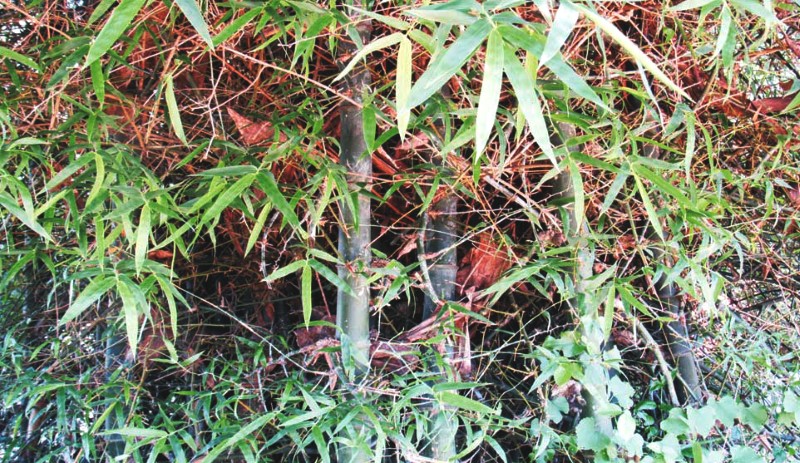Digital Garden
Trees of SN College Chempazhanthy:
Bambusa bambos (L.) Voss.
മുള
| Synonym: | Bambusa arundinacea (Retz.) Willd. |
| Sub Family | Poaceae |
| Local Names: | Mula, Muncha, Bamboo, Spiny bamboo |
 |
|
Flowering and fruiting period: July – February Key Characters: Culms from a thick stoloniferous rhizome, erect, up to 30 m tall; culm sheaths broadly triangular, densely brownish-hairy within, and scattered hairy without. Leaves up to 20 cm long, linear, glabrous; ligule short, entire; petiole short. Inflorescence a compound panicle with the spikelets in heads. Spikelets 1-many flowered, oblong, terete. Bracts glume-like. Glumes 1-3, broadly ovate, mucronate. |
|